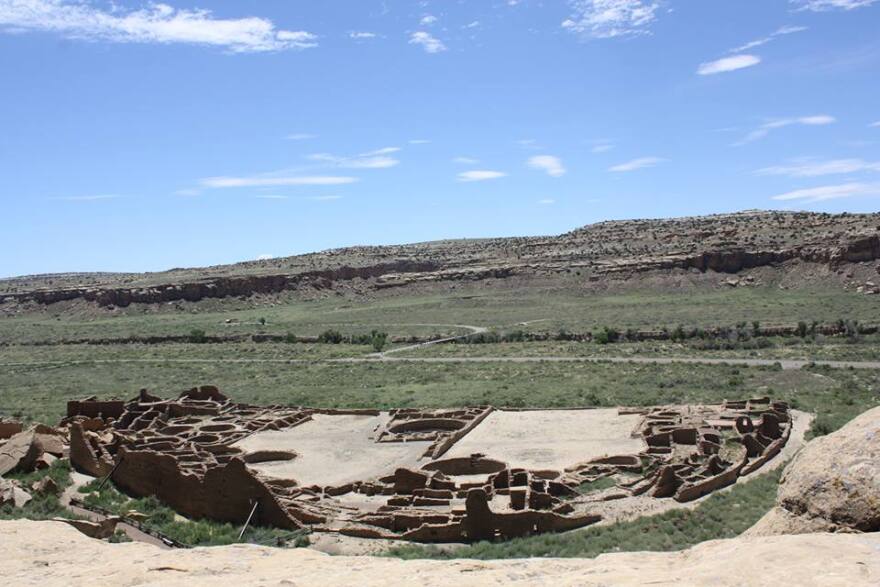Commentary: Santa Fe, N.M. — Tribal governments, as well as thousands of people and more than a dozen groups representing over five million members called on the Trump administration to cancel its plan to lease nearly 15,000 acres of ancestral tribal and federal public lands in New Mexico for fracking without fully analyzing environmental, public health, or cultural harms.
The Bureau of Land Management’s (BLM) February oil and gas lease sale is the latest effort in the Trump’s Administration’s “energy dominance” agenda, sacrificing public lands for fracking in quarterly lease sales across the West. In June, the agency auctioned off nearly 40,000 acres of public and tribal land throughout New Mexico despite receiving thousands of protestsfrom Tribal governments, advocacy organizations, and citizens who ran 60 milesto deliver protests. As more land within the San Juan and Permian Basins of the Greater Chaco and Greater Carlsbad landscapes are offered for sale, local advocates continue to draw attention to the clear link between the Bureau of Land Management’s oil and gas leasing program and the worsening climate crisis.
More than 94% of available land in the Greater Chaco region and 97% in the Greater Carlsbad region have been sold to the oil and gas industry using outdated resource management plans that fail to analyze the impacts of industrialized fracking on the culture, communities, and climate of New Mexico. Already more than 64,000 wells are currently operating on the state’s public and tribal lands without care to community health or environmental justice. More than 500 new industrial wells have recently been drilled and fracked near Chaco Canyon, the heart of the Greater Chaco region, and the Greater Carlsbad region now houses the world’s largest oilfield.
In spite of the serious negative impacts that expanded fracking is already having on local communities, the Bureau of Land Management has chronically failed to take a hard look at the cumulative effects of oil and gas leasing and has even rolled back opportunities for the public to weigh in on this process, shortening “protest” or appeal periods from 30 days to just 10 days, forbidding the public to comment via email or fax, and refusing to hold any public hearings, even near impacted communities.
A recent federal court rulingexposed the Bureau of Land Management’s myopic approach to assessing the impacts of oil and gas drilling, with the court overturning the agency's narrow focus on individual wells. The court ruled that the BLM must properly consider the cumulative impacts on water resources from the thousands of new wells planned across the region. In response to the ruling, a coalition of Tribal leaders, environmental, and community groups representing over 5 million people called on the agency to halt new oil and gas activities, recognizing that hundreds of drilling permits issued in recent years similarly lacked adequate environmental analysis. Instead of pausing to fully consider the impacts of continued oil and gas production, the agency continues to offer even more land for sale, trying to paper over the inadequacies of its environmental reviews after-the-fact using questionable waterandclimate“supplemental white papers” instead of required environmental impact statements.
More than a dozen groups submitted extensive comments on the Administration’sproposalto auction off 17,000 acres of public lands in February across New Mexico, Oklahoma, and Kansas. Of the lands slated for sale, nearly 1,500 acres are located within 20 miles ofChaco Culture National HIstorical Parkand adjacent the Santa Fe National Forest, and more than 13,000 acres are within close proximity toCarlsbad Caverns National Parkwith sensitive cave and karst geology. In the comments, the groups noted that the Bureau of Land Management conducted little to no analysis on the potential harm to the public health or to New Mexico’s clean air, rivers and streams, night skies, wildlife habitat, cultural resources, or the national parks and nearby nuclear storage facilities.
Advocates havethankedthe entire New Mexican Congressional Delegation for their efforts to further protection of New Mexico’s public health and cultural heritage within the Greater Chaco Landscape, especially applauding Senator Tom Udall and Congressman Ben Ray Lujan’s recent efforts to further Chaco protection in the bi-partisanFY2020 Appropriations bill, which restricts funding for new oil and gas leasing within the proposed 10-mile buffer of protection and allocates $1M for a tribal-lead cultural resources studyof the area.
Though Greater Chaco protections have made minor steps forward, oil and gas leasing on federal public lands still significantly compounds the climate crisis. Reportsindicate that close to one-quarter of all U.S. greenhouse gas emissions can be traced back to fossil fuel extraction from federal public lands, with carbon emissions from the Permian Basin alone threatening to consume more than 10 percent of the global carbon budget by 2050.
Seeherefor WildEarth Guardians’ map of the proposed sale.


